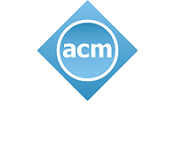
Middleware
for
Digital Twin
2024
December 03, 2024
The Hong Kong Polytechnic University, HK, China
ACM/IFIP Midd4DT 2024
Nowadays, the concept of Digital Twin (DT) is used in a wide variety of domains
such as manufacturing, healthcare, smart cities, smart agriculture, smart grids,
and mechanical engineering, to enhance the performance, enable proactive
maintenance to extend the physical system's life, enhanced productivity, and
faster innovation with reduced costs.
Typically, the digital twin systems are generated and then synchronized using
data flows in both directions between the
real-world physical components and their virtual replica counterparts.
Furthermore, a digital twin can enable continuous prototyping, and testing
on-demand, without interruption, assuring and self-optimizing the forthcoming 5G
network and beyond. It creates virtual replicas of physical systems in various
application scenarios and maintains a device twin for every connected device.
Furthermore, Industrial Internet of Things (IIoT) middleware, service-oriented
middleware, and many other middleware
modernization approaches are providing a Virtual Automation Bus (VAB) to offer
end-to-end connectivity between physical
assets and the digital twin through many heterogeneous communication protocols,
brokers, and messaging services, while
ensuring interoperability among heterogeneous protocols and facilitating
cross-layer interaction with the digital twin through VAB.
Topics:
The main goal of ACM/IFIP Midd4DT 2024 workshop is to address these challenges and present advanced and
innovative
tools, techniques, models, architectures, specifications, architectures, and algorithms that bring diverse
middleware
technologies to DT in IoT applications and services. Contributions addressing both theoretical and practical
applications, including, but not limited to, the following topics, are welcome for submission:
- Recent Developments and Future Perspectives of DT-enabled middleware
- Middleware modernization for DT on the Edge-Cloud Continuum
- Digital Twins and Web of Things
- Ubiquitous and Pervasive Digital Twins
- Digital Twins Services and Communications protocols and architectures
- Digital Twins adoption in 5G/6G architectures and application scenarios
- digital Twin-oriented architecture for cyber-physical systems interaction
- Digital twin middleware for Industrial IoT and Autonomous Systems
- Software Engineering, Model Driven Engineering, and Modelling digital twin data and architecture.
- Digital Twin Specification, standardization, interoperability, and representation
- Ontology modeling, linking, relationship and composition for Digital Twin
- Ontology-defined Middleware and conceptual frameworks for Digital Twin
- Networking, orchestration, and communication middleware for Digital Twin
- Middleware framework for DT in Robotics, ROS, and Human-Robot Interactions
- Application of the digital twin in multi-dimensional intelligent and future industry
- Digital Twins in the Era of Web of Things: architectures and application scenarios
- AI/ML, Federated learning, TinyML, and Edge AI for DT Real-Time IoT
- Intelligent Edge, Fog, and cognitive Aspects of DT IoT beyond 5G
- Digital Twins Middleware for Real-Time IoT
- Digital Twins deployments, provisioning, orchestration, and monitoring
- DT Security and Privacy for in Edge to cloud Systems
- Digital Twin in IoT application domains, such as (but not limited to): smart cities, healthcare, precision
medicine, smart farming and smart agriculture, agri-food sector, integrated energy systems, construction
Industry, structural integrity, electric vehicle and autonomous vehicles, supply chain, smart production,
and logistics, etc.
Important Dates:
-
Submission deadline:
September 25, 2024 October 06, 2024 (FIRM)
-
Acceptance notification: October 20, 2024
-
Camera-ready papers : October 27, 2024
-
Workshop Date: December 3, 2024
Guidelines for Manuscripts
The Midd4DT 2024 proceeding will be published in the ACM Digital Library. Authors are invited to submit
original,
unpublished research. Papers must be written in English and strictly following
ACM
SIGPLAN style (10pt font size) .
Papers are to be submitted through the HotCRP system
Two types of submissions are accepted:
-
Regular Research papers: Contributions should describe original work
(up to 6 pages including all text, figures, references, and appendices).
-
Short Papers and position papers: Research in progress,
tools presentations,
and new ideas (up to 4 pages including all text, figures, references, and appendices).
Submitted papers will be evaluated according to their rigor, significance, originality, technical quality, and
exposition, by at least three distinct members of an international program committee.
At least one author of each accepted paper must register and participate in the workshop.
Registration is subject to the
terms, conditions, and procedures of the main conference.
Keynote Speaker
Merouane Debbah (Tentative)
Full Professor with the University of Abu Dhabi, UAE
Organizers
- Akram Hakiri, University of Pau & Pays de l'Adour, France
- Aniruddha Gokhale, Vanderbilt University, USA
Technical Program Committee
- Uttam Ghosh, Meharry Medical College, USA
- Bassem Sellami, TalTech - Tallinn University of Technology, Estonia
- Nedra Mellouli, Léonard de Vinci Pôle Universitaire, Paris La Défense, & LIASD-Paris 8 University. France
- Nan Guo, Tennessee Tech University, USA
- Pascal Berthou, LAAS-CNRS, France
- Aicha BenSalem, University of Carthage, Tunisia
- Slim Amri, University of EL MANAR, Tunisia
- Ziran Min, Siemens, USA
- Amira Mouakher, University of Perpignan, France
- Montini Elias, Politecnico di Milano, Italy
- Hella Kaffel, University of EL MANAR, Tunisia
- Walid Barhoumi, National Engineering School of Carthage, Tunisia
- Debashis Das, Kalyani University, India
- Sadok Ben Yahia, Southern Denmark University, Denmark
- Christine LOUBERRY, University of Pau & Pays de l'Adour, France
- Robert G Pettit, George Mason University, USA
- Luca Davoli, University of Parma, Italy
© Conference Organizers



